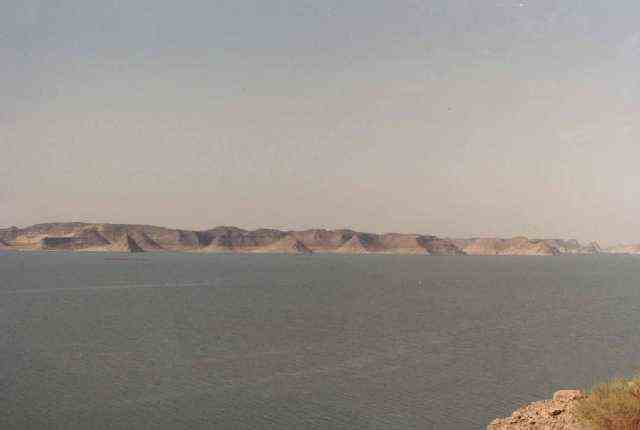(Egypt)
These two massive rock temples are at Abu Simbel, a village in Upper Egypt, near the border with Sudan.
They
are situated on the western bank of Lake
Nasser,
about 230km southwest of Aswan (about
300km by road).
The complex is part of the
UNESCO World Heritage Site known as the "Nubian Monuments".
The twin temples
were originally carved out of the mountainside in the 13th
century BC, during the 19th dynasty reign of the Pharaoh
Ramesses II.
They serve as a lasting monument to the king and his queen
Nefertari, and commemorate his victory at the Battle of Kadesh.
Between 1964 and 1968, the entire site was carefully cut into large
blocks (up to 30 tonnes, averaging 20 tonnes),
dismantled, lifted and reassembled in a new location
onto an
artificial hill made from a domed structure,
higher above the Aswan High
Dam
reservoir,
in one of the greatest challenges of archaeological engineering in
history.
The
relocation of the temples was necessary or they would have been
submerged during the creation of Lake Nasser,
the
massive artificial water reservoir formed after the building of the
Aswan High Dam on the
River Nile.
We visited Egypt in August 1999 during our 14-week around-the-world tour.
Just
after arrival at Abu Simbel airport on the Luxor Air 707.
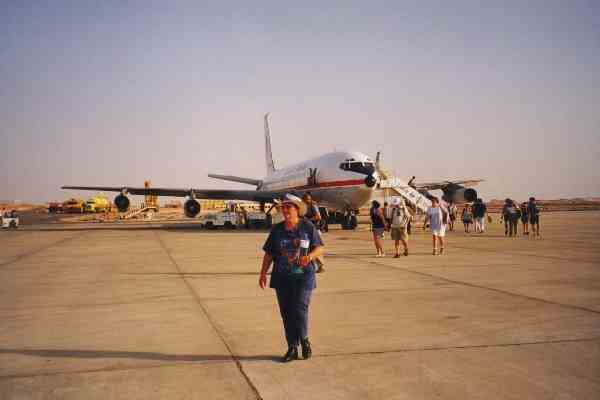

Abu
Simbel is one of the great sights of the world that everyone
must see once in their lifetime.
The original temples were built by Ramses II about 1270BC.
This is a photo of the Great Temple.

A
close up view of the entrance to the Great Temple at Abu
Simbel.
These 4 colossal seated statues of Ramses II are about 21 metres
high.
They are accompanied by smaller standing statues of his relatives by
his legs.
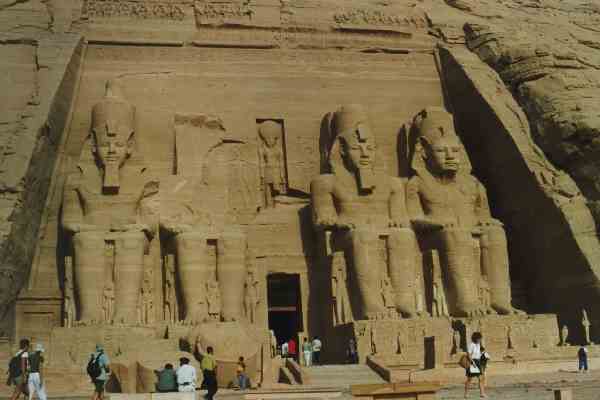
A
closer view of one of the colossal seated statues of Ramses II.
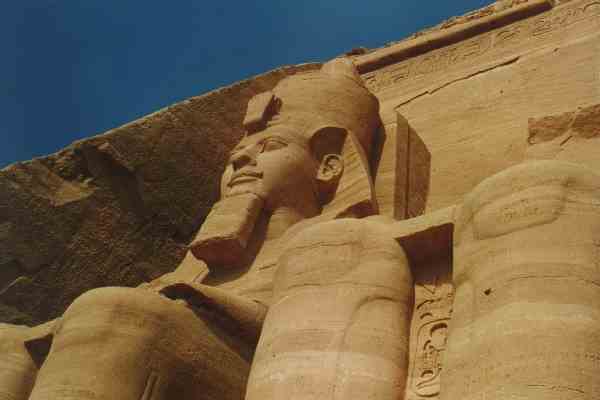
A
distant view of the other temple, the Small Temple at Abu Simbel.
This temple was dedicated to Hathor of Ibshek and Queen Nefertari.
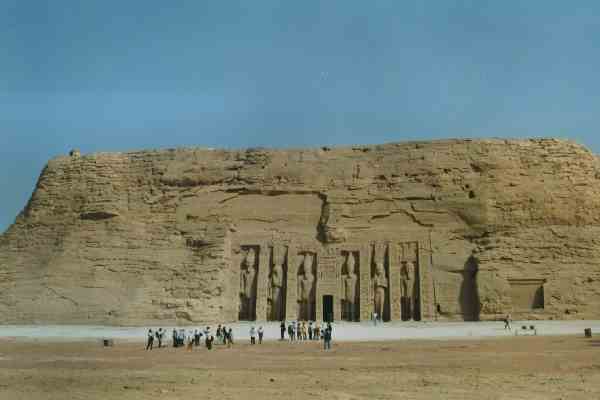
A closer view of the 6 colossal standing statues of the Small
Temple at Abu Simbel.
They are about 10 metres high.
Four of them represent the king (Ramses II) and two the queen
(Nefertari),
each being flanked by princes and princesses.
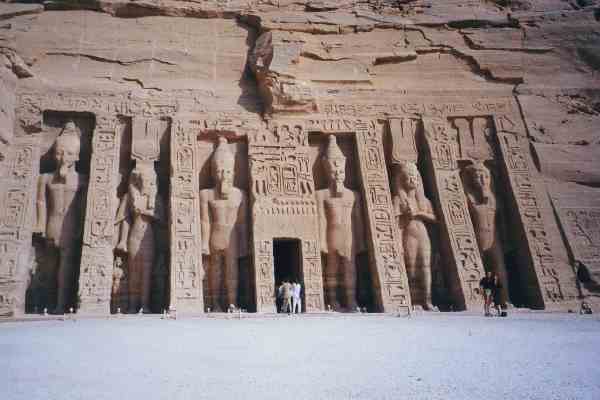
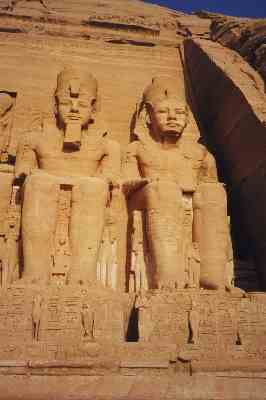

Cartouches
on the wall at Abu Simbel.
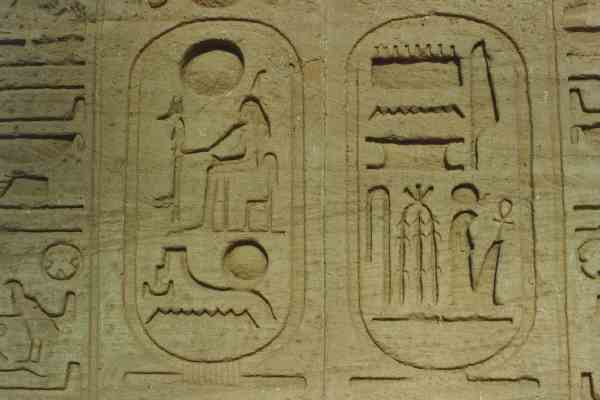
At
the base of one of the colossal seated statues of Ramses II at the
Great Temple at Abu Simbel.
In this photo you see how massive these statues are.

The ankh-like key used in the main door at the Great Temple at Abu Simbel.
The ankh was a symbol of generation or enduring life.
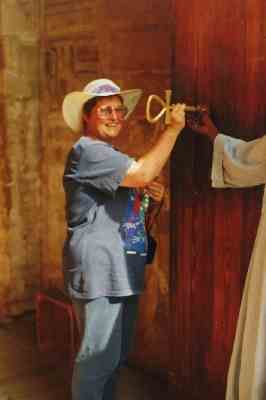
Back
to the plane after visiting the magnificent temples at
Abu Simbel.
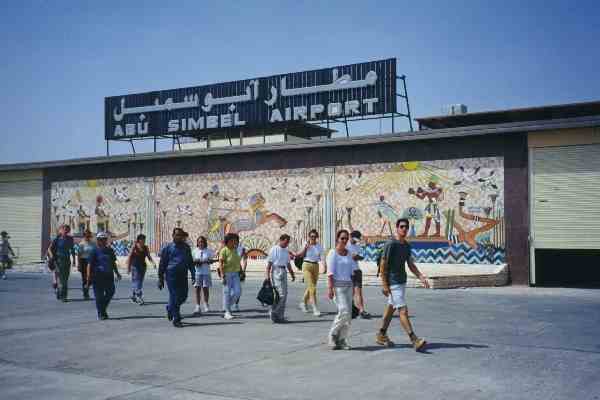
Some Abu Simbel pictures from my 1985 visit as part of my 13-week Bangkok - Hong Kong - Japan - Russia - Europe - Greece - Israel - Egypt - Singapore trip ...
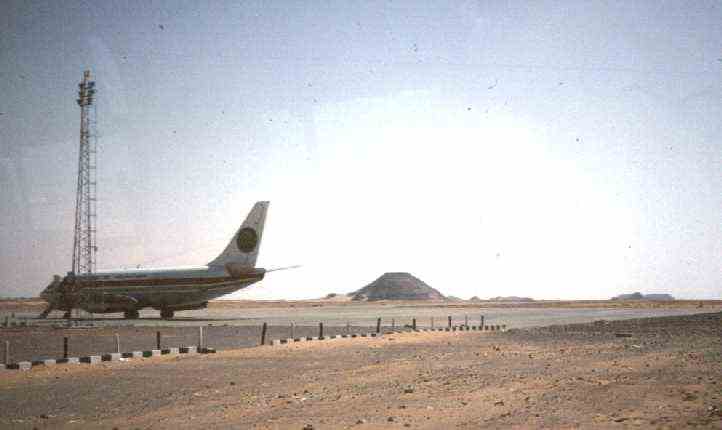
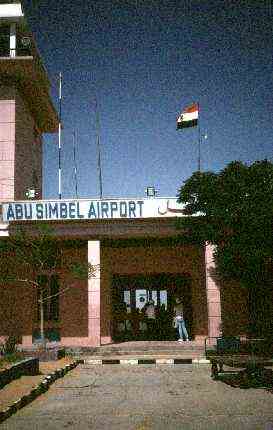
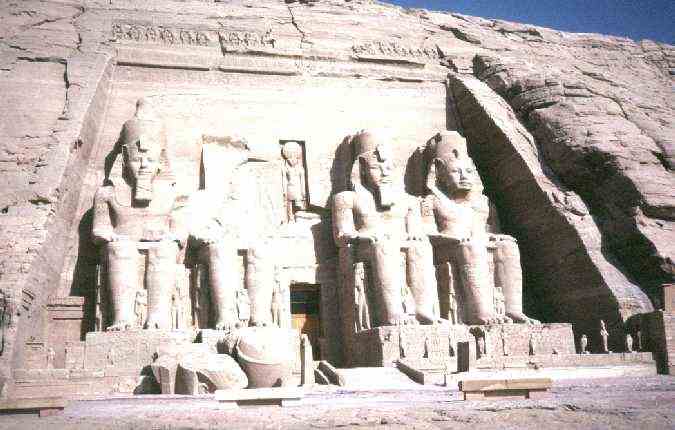
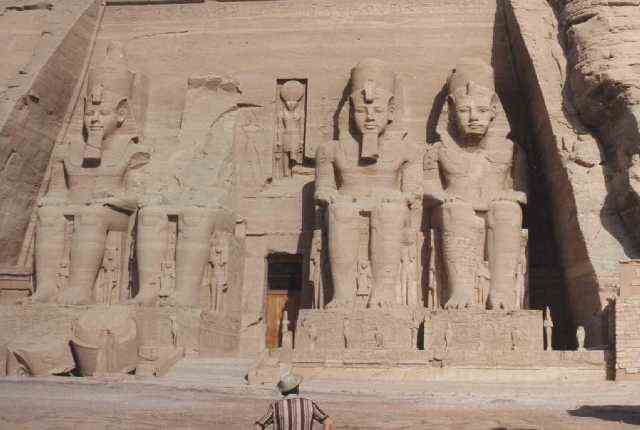
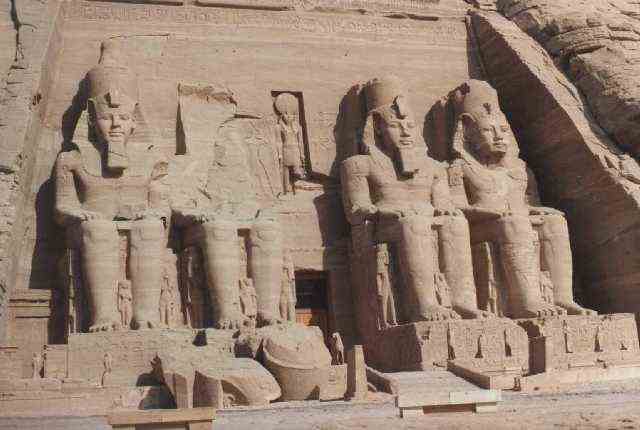


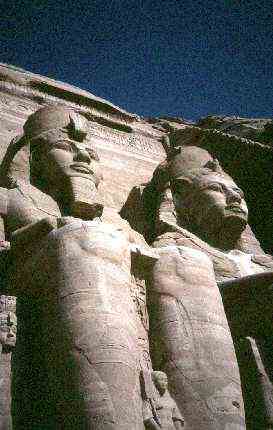
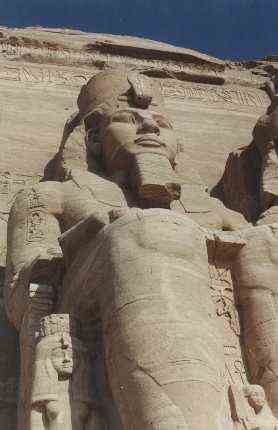
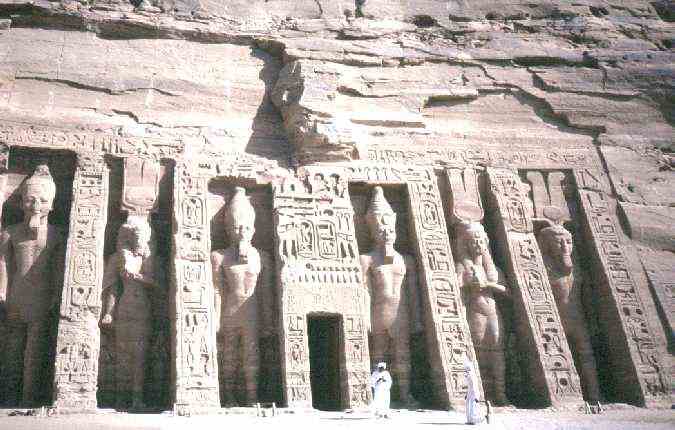
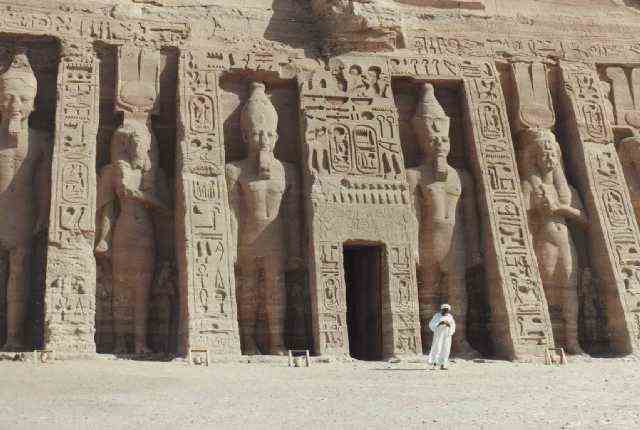
Flying
over the Aswan High Dam on the way back to Aswan.
The lake has changed the weather in this area.
It is now more humid and there is a little more rain.
